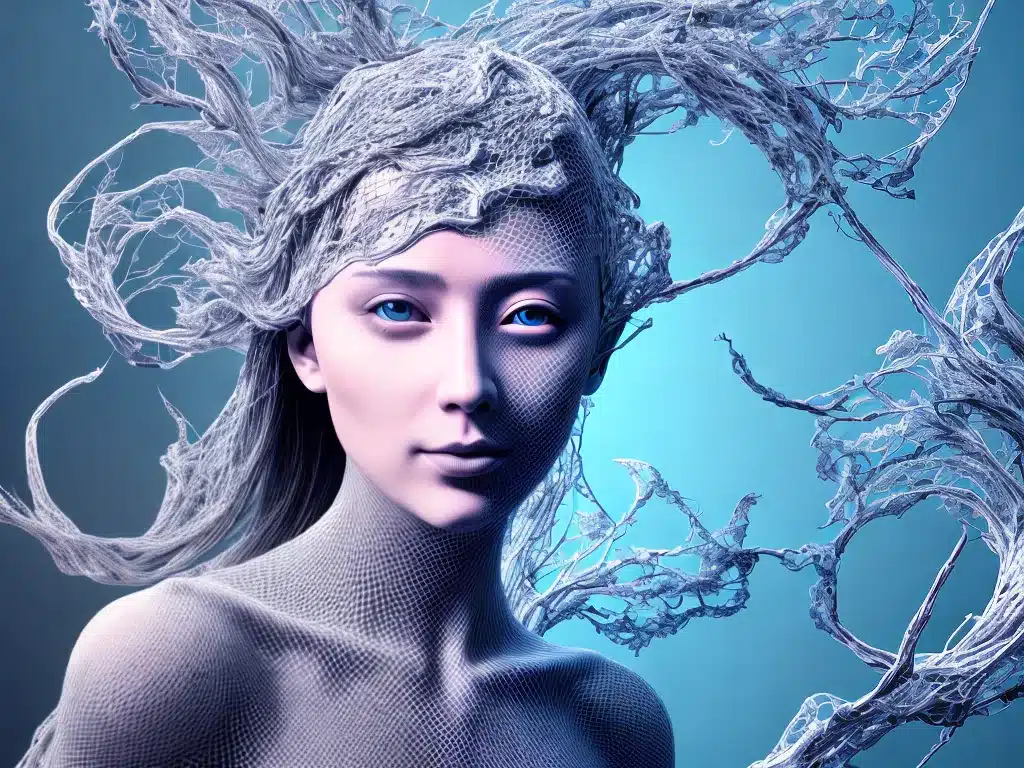The emergence of AI image generation has been nothing short of revolutionary. As a designer and artist myself, I have been amazed by the capabilities of tools like DALL-E 2, Midjourney, and Stable Diffusion. In this article, I will provide an in-depth look at how these AI systems work, their impact so far, and what the future may hold for AI and creativity.
How AI Image Generation Works
Neural Networks and Deep Learning
AI image generators utilize neural networks, which are computing systems inspired by the human brain. They are trained on massive datasets of images, learning to recognize patterns and relationships between pixels. Through a process called deep learning, the neural networks can generate new images from text descriptions.
Diffusion Models
Many of the latest systems use a technique called diffusion models. The model starts with random noise and gradually adds more detail in each step. This allows it to learn robust image representations, resulting in higher quality and more coherent outputs.
Training Data
The capabilities of AI image generators depend heavily on their training data. Systems like DALL-E 2 are trained on hundreds of millions of image-text pairs from the internet and books. The more diverse data they have access to, the more creative they can be.
Current Capabilities
The current generation of AI image generators can produce remarkably photorealistic and artistic interpretations from text prompts. Here are some of the key capabilities:
-
Photorealism – They can generate realistic photos of people, objects, and scenes that are difficult to distinguish from real photos.
-
Artistic renditions – The systems can mimic a wide range of artistic styles, from oil paintings to anime drawings.
-
Conceptual ideas – They allow bringing abstract concepts and imaginative ideas to life through visuals.
-
Consistency – Multiple images generated from the same prompt are visually cohesive.
-
Control – Users can guide the output by providing detailed text prompts and editing images.
Impact on Design
AI image generation has made a huge splash in the design world already. Some of the key impacts include:
-
Faster ideation – Designers can quickly visualize different concepts without manual work.
-
Unique inspiration – The AI can produce novel directions that may not have occurred to a designer.
-
Easier iteration – Images can be refined by providing additional text prompts.
-
Democratization – Anyone can generate high-quality designs, not just professionals.
-
Workflow integration – Design tools like Adobe Photoshop plan to integrate AI image generation.
Concerns Around Originality
However, there are also concerns around originality and integrity. Some designers worry that AI-generated content lacks creativity and that the technology could eventually replace human designers. Proper attribution and responsible use of AI art remain open questions.
Impact on Art
AI image generators have been stirring up the art world as well. Some of the developments are:
-
New AI artForms – Entirely new genres like AI doodles and iterative art that evolve through prompts.
-
Mixed media – Artists combining AI art with physical media to enhance their workflows.
-
Questioning human creativity – Debates around whether AI art qualifies as true creativity.
-
AI artists – Artworks credited to the AI systems themselves, challenging notions of authorship.
-
Democratization – Allowing casual creators to make art, which was not feasible earlier.
-
Art marketplace changes – Emergence of AI art in markets like NFTs and its ramifications.
AI Art Controversies
At the same time, AI art faces backlash from traditional artists who believe it lacks human intentionality and emotional resonance. There are also concerns around copyright and proper attribution.
The Future
It’s clear that AI image generation is here to stay and will only grow more advanced. Here are some exciting directions emerging:
-
Multimodal AI – Systems that can generate integrated images, text, animations, 3D models, and even music.
-
Hyperpersonalization – Outputs tailored to individual users’ artistic styles and preferences.
-
Assistive AI – Intuitive collaboration between human creators and AI, combining their strengths.
-
Specialized applications – Domain-specific AI generators for fields like industrial design, architecture, fashion, etc.
-
Regulation and ethics – Developing frameworks to ensure responsible and equitable use of generative AI.
While there are valid concerns around the risks of AI art, its creative potential cannot be denied. The technology is bound to become an integral part of both mainstream and avant-garde visual culture. Establishing human oversight and intent is key, allowing us to harness AI as a tool for expanding our imagination. The future of creativity stands to be augmented, not replaced, by these rapidly evolving generative systems.













